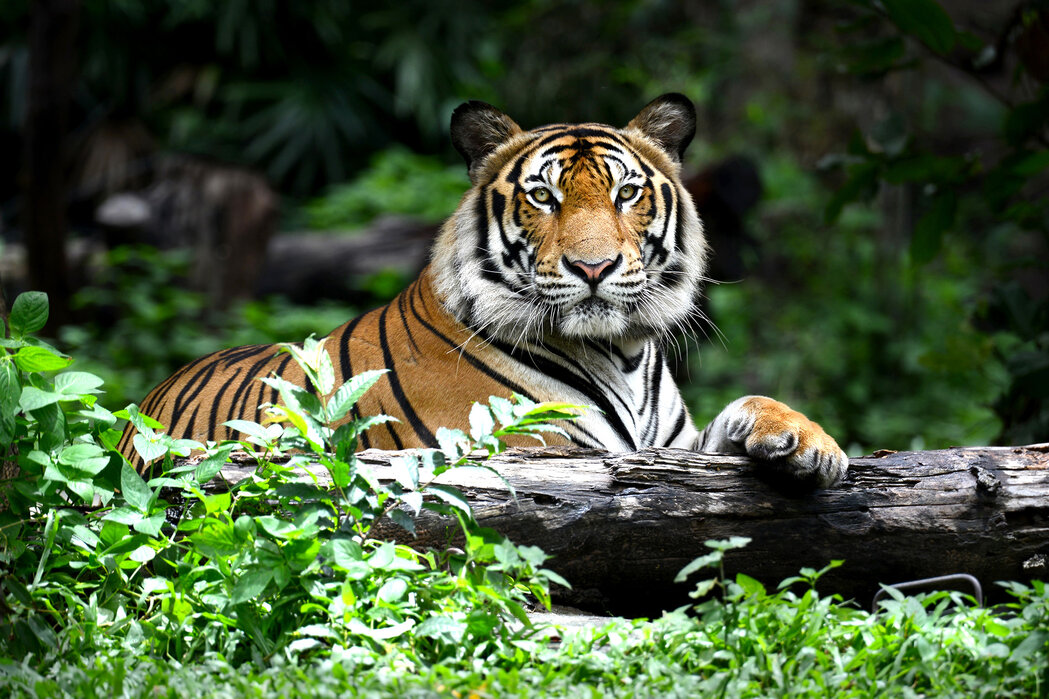Tiger
Scientific Name: Panthera tigris
Family: Felidae
Order: Carnivora
Physical Description
Size: Adult tigers can measure up to 3.3 meters (10.8 feet) in length, including the tail, with a shoulder height of up to 1.1 meters (3.6 feet).
Weight: They typically weigh between 90 and 300 kilograms (200 to 660 pounds), with some larger males reaching up to 360 kilograms (800 pounds).
Appearance: Tigers are known for their dense, vividly striped fur, which ranges from a pale yellow to reddish-orange background color interspersed with black stripes. Each tiger has a unique stripe pattern.
Habitat and Distribution
Habitat: Tigers are highly adaptable and can be found in a variety of habitats, including tropical forests, mangroves, grasslands, and temperate forests.
Distribution: Historically, tigers ranged widely across Asia, from Turkey in the west to the eastern coast of Russia. Today, they are found in fragmented populations across 13 countries in South and Southeast Asia, China, and the Russian Far East.
Behavior
Diet: Tigers are carnivorous, primarily hunting medium and large-sized ungulates such as deer, wild boar, and buffalo. They are also known to prey on other animals including leopards, pythons, and crocodiles.
Social Structure: Tigers are solitary creatures, only coming together for mating or when a mother is raising her cubs. They are territorial and actively patrol and mark their ranges to avoid direct conflicts.
Reproduction: Female tigers reach sexual maturity at around 3-4 years of age, and males at about 4-5 years. After a gestation period of approximately 104 days, a female may give birth to 2-4 cubs.
Conservation Status
Threats: Tigers face multiple threats including habitat loss due to deforestation and urban expansion, poaching for their fur and body parts used in traditional medicine, and human-wildlife conflict.
Conservation: Tigers are listed as endangered on the IUCN Red List. Conservation efforts include habitat restoration, strengthening anti-poaching laws, and international cooperation such as the Global Tiger Forum which aims to double the wild tiger population by 2022 through the TX2 goal.
Interesting Facts
The tiger's stripes are not just on their fur; their skin is also striped beneath the fur.
Tigers can roar as loud as 114 decibels, which is about as loud as a jet airplane taking off and can be heard from over 2 kilometers away.
Unlike most cats, tigers are excellent swimmers and often bathe in ponds and lakes to cool off.

Комментарии
Отправить комментарий